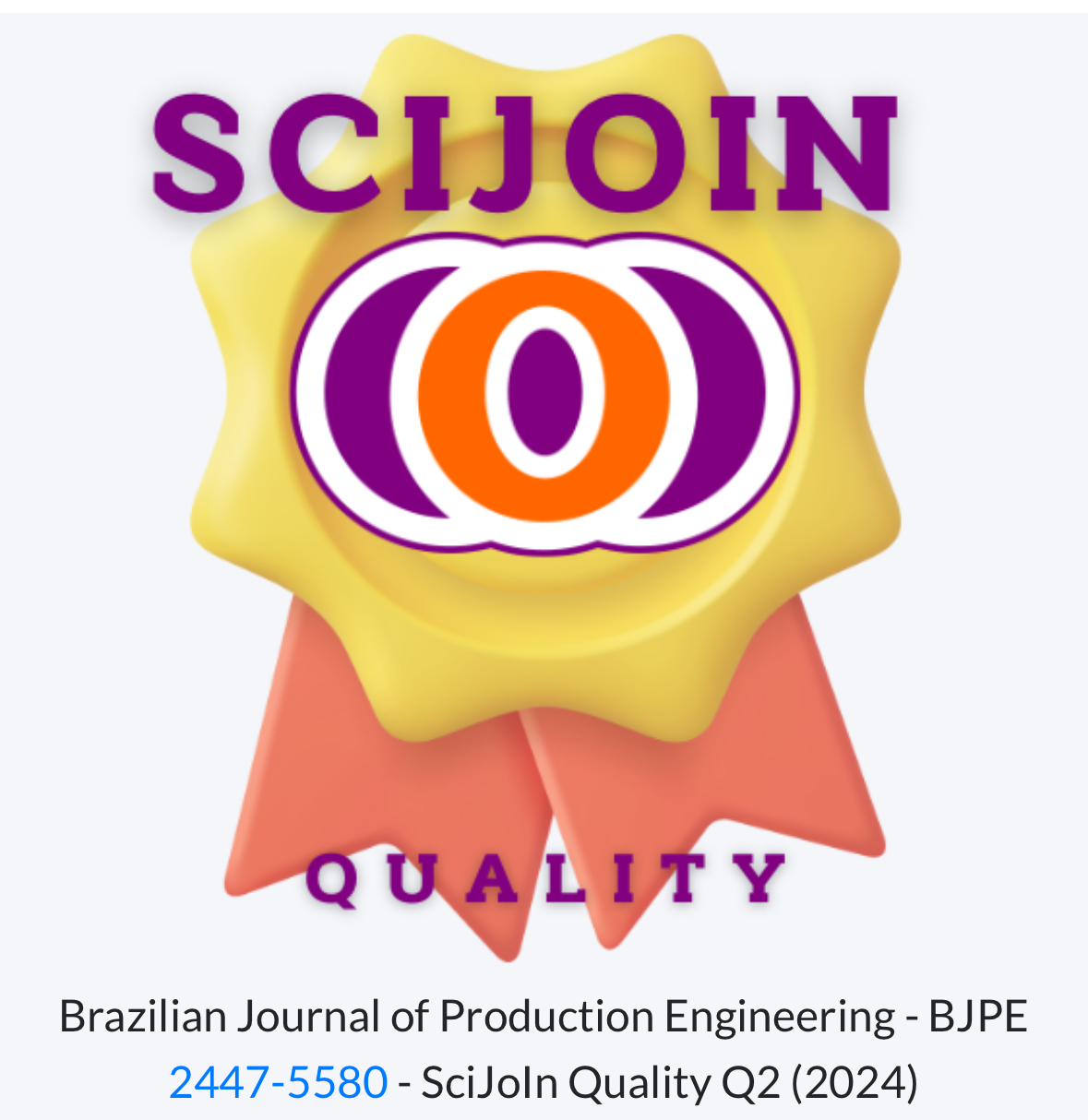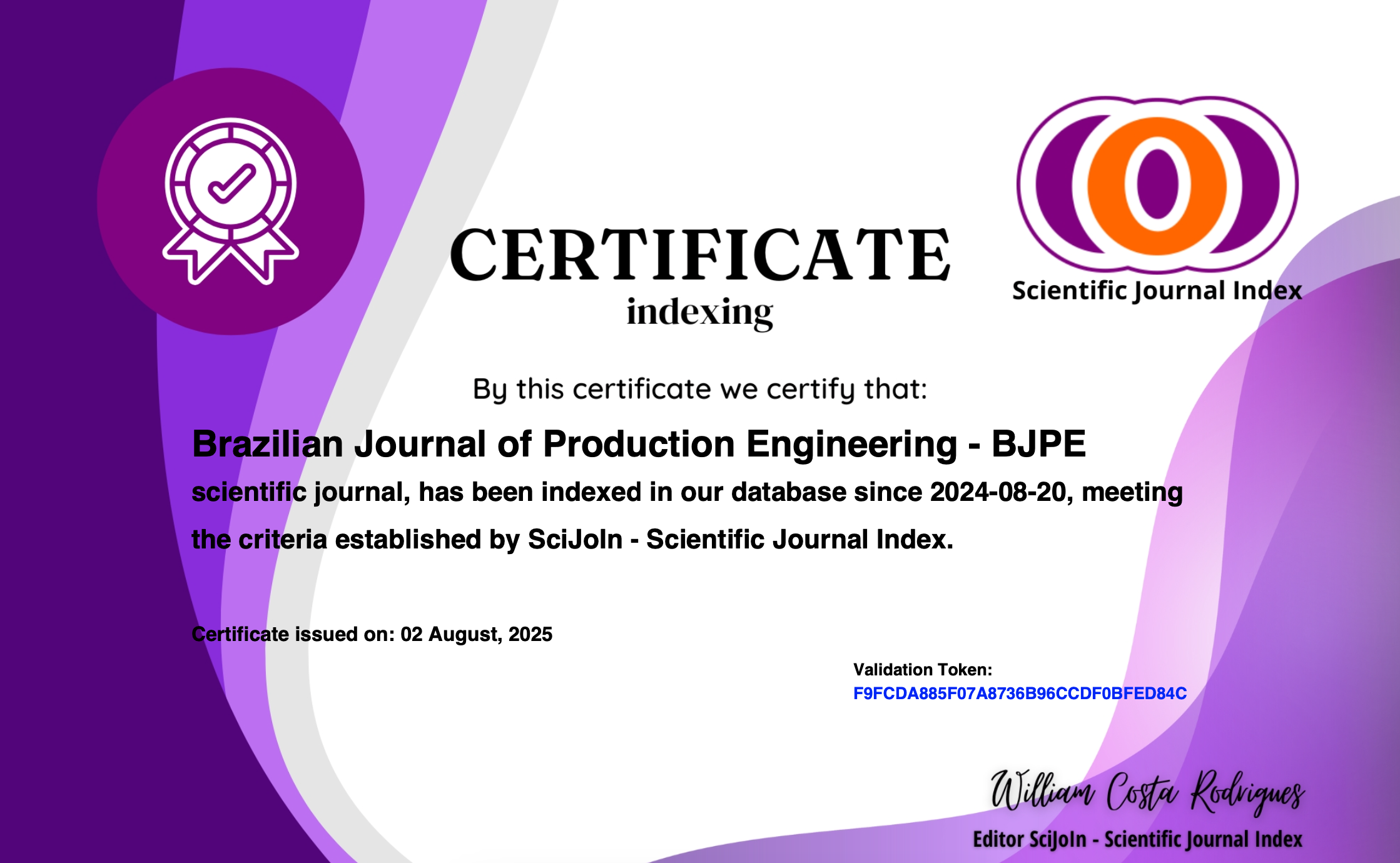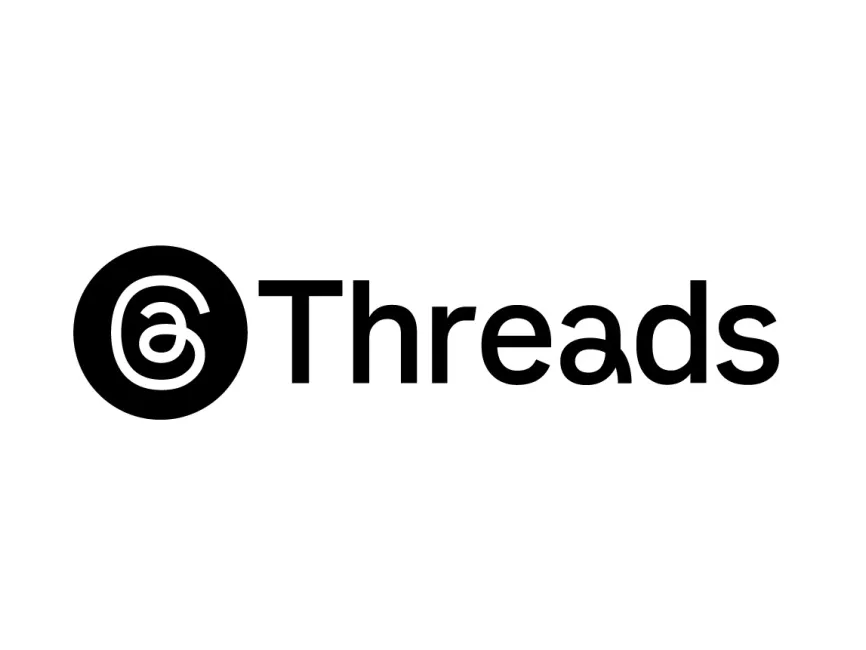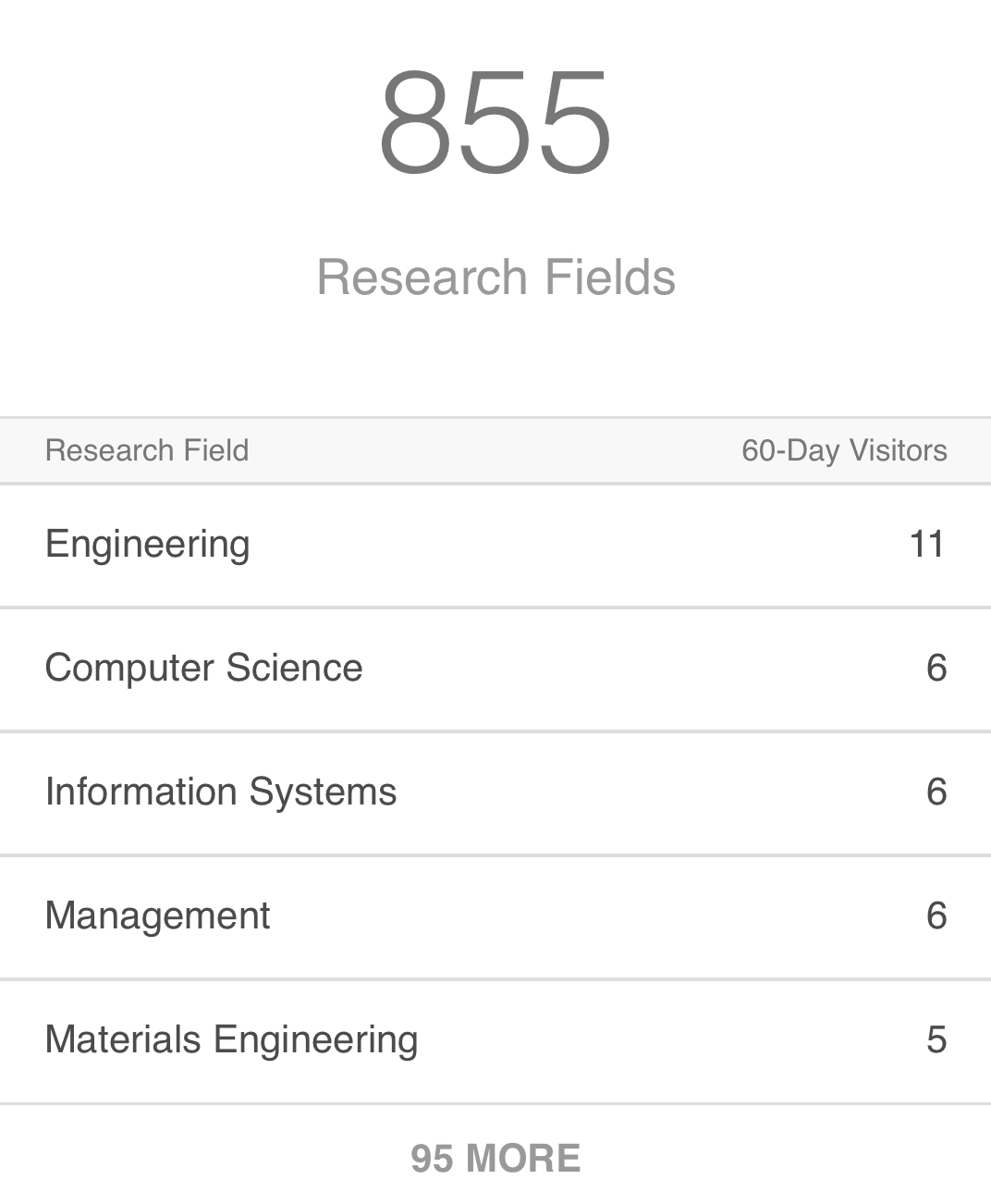Eficácia do uso dos corticosteroides como terapia adjuvante no choque séptico
DOI:
https://doi.org/10.47456/bjpe.v8i1.37280Palavras-chave:
Eficácia, Corticosteroides, Terapêutica, Choque SépticoResumo
Contexto: O choque séptico consiste em um estado de falência circulatória aguda somada a um foco infeccioso ou com predomínio de componente endotóxico. Os corticosteroides são uma classe de fármacos sintetizados com base em hormônios esteroides endócrinos e tem sido usados com foco na hipoperfusão. Entretanto, a eficácia e a segurança da terapia com corticosteroides no choque séptico ainda permanecem incertas, visto que existem tanto relatos de melhora clínica quanto de efeitos adversos graves. Objetivo: Este estudo objetiva avaliar a eficácia da terapia adjuvante com corticosteroides em pacientes com choque séptico a fim de procurar se há evidências científicas que apresentem benefícios desse tratamento, bem como estabelecer, se positivo, o manejo, de acordo com as evidências, nessa patologia. Método: Caracteriza-se como uma Revisão Integrativa, a qual os artigos foram selecionados na plataforma da Biblioteca Virtual em Saúde, em que foram identificados 460 artigos, porém foram selecionados 39 dentre estes. Resultados: Esses estudos foram realizados com mais frequência nos anos de 2017, 2018 e 2019. Após a análise dos dados, sugeriu-se que essa terapêutica se relacionou com uma reversão mais rápida do choque, diminuição dos dias de uso de vasopressores e diminuem o tempo de internação em UTI. Contudo, existem riscos de efeitos adversos. Conclusão: Com isso, concluiu-se que os pacientes candidatos a esse tratamento são aqueles com maior gravidade e/ou que não respondem primeiramente a ressuscitação com fluidos e drogas vasoativas. Ademais o uso dessas medicações deve ser individualizado, levando-se em consideração o fenótipo e o genótipo de cada paciente.
Downloads
Referências
Allen, J. M., Feild, C., Shoulders, B. R., & Voils, S. A. (2019). Recent updates in the pharmacological management of sepsis and septic shock: a systematic review focused on fluid resuscitation, vasopressors, and corticosteroids. Annals of Pharmacotherapy, 53(4), 385-395. https://doi.org/10.1177/1060028018812940
Angurana, S. K. & Kumar, P. (2017). Assessing feasibility of randomized controlled trials of corticosteroids in pediatric septic shock in developed countries: only half the answer to the problem. Pediatric Critical Care Medicine, 18(11), 1087. https://doi.org/10.1097/PCC.0000000000001310
Annane, D. (2019). Why my steroid trials in septic shock were “positive”. Critical care medicine, 47(12), 1789-1793. https://doi.org/10.1097/CCM.0000000000003889
Antcliffe, D. B. & Gordon, A. C. (2019). Why understanding sepsis endotypes is important for steroid trials in septic shock. Critical care medicine, 47(12), 1782-1784. https://doi.org/10.1097/CCM.0000000000003833
Argent, A. C. & Kissoon, N. (2017). Randomized Clinical Trials of Corticosteroids in Septic Shock: Possibly Feasible, But Will They or Should They Change My Practice? Pediatric critical care medicine, 18(6), 589-590. https://doi.org/10.1097/PCC.0000000000001138
Bentzer, P., Fjell, C., Walley, K. R., Boyd, J., & Russell, J. A. (2016). Plasma cytokine levels predict response to corticosteroids in septic shock. Intensive care medicine, 42(12), 1970-1979. https://doi.org/10.1007/s00134-016-4338-z
Briegel, J., Bein, T., & Möhnle, P. (2017). Update on low-dose corticosteroids. Current Opinion in Anesthesiology, 30(2), 186-191. https://doi.org/10.1097/ACO.0000000000000442
Cecconi, M., Evans, L., Levy, M., & Rhodes, A. (2018). Sepsis and septic shock. The Lancet, 392(10141), 75-87. https://doi.org/10.1016/S0140-6736(18)30696-2
Cohen, J., & Venkatesh, B. (2019). Adjunctive corticosteroid treatment in septic shock. Anesthesiology, 131(2), 410-419. https://doi.org/10.1097/ALN.0000000000002604
Costanzo, L. S. (2018). Fisiologia. 6. ed. Rio de Janeiro: Elsevier Editora Ltda.
Cvijanovich, N. Z., Anas, N., Allen, G. L., Thomas, N. J., Bigham, M. T., Weiss, S. L., ... & Wong, H. R. (2017). Glucocorticoid receptor polymorphisms and outcomes in pediatric septic shock. Pediatric critical care medicine: a journal of the Society of Critical Care Medicine and the World Federation of Pediatric Intensive and Critical Care Societies, 18(4), 299. https://doi.org/10.1097/PCC.0000000000001058
Darmaros, L. F., Delgado, A. F., & Carvalho, W. B. D. (2016). Corticosteroids in septic shock: What should the decision in pediatrics be? Revista da Associação Médica Brasileira, 62, 482-484. https://doi.org/10.1590/1806-9282.62.06.482
El-Nawawy, A., Khater, D., Omar, H., & Wali, Y. (2017). Evaluation of early corticosteroid therapy in management of pediatric septic shock in pediatric intensive care patients: a randomized clinical study. The Pediatric infectious disease journal, 36(2), 155-159. https://doi.org/10.1097/INF.0000000000001380
Fang, F., Zhang, Y., Tang, J., Lunsford, L. D., Li, T., Tang, R., ... & You, C. (2019). Association of corticosteroid treatment with outcomes in adult patients with sepsis: a systematic review and meta-analysis. JAMA internal medicine, 179(2), 213-223. https://doi.org/10.1001/jamainternmed.2018.5849
Garza, M. I., Zapata, M. P., Bilbao, I. G., Martínez, C. F., Horno, R. A., & Pomes, G. G. (2018). Administración de corticoides a los pacientes con sepsis grave y mejora de su mortalidad intrahospitalaria: Una revisión sistemática. Enfermería Global, 17(4), 612-639. https://doi.org/10.6018/eglobal.17.4.321571
Gibbison, B., López-López, J. A., Higgins, J. P., Miller, T., Angelini, G. D., Lightman, S. L., & Annane, D. (2017). Corticosteroids in septic shock: a systematic review and network meta-analysis. Critical Care, 21(1), 1-8. https://doi.org/10.1186/s13054-017-1659-4
Golan, D.E., Tashjian, A.H., Armstrong, E.J., & Armstrong, A.W. (2018). Princípios de farmacologia: a base fisiopatológica da farmacoterapia. 3. ed. Rio de Janeiro: Guanabara Koogan.
Hall, J.E. & Guyton, A.C. (2017). Guyton e Hall fundamentos da fisiologia. 13. ed. Rio de Janeiro: Elsevier Editora Ltda.
Hyvernat, H., Doyen, D., Barel, R., Kaidomar, M., Goubaux, B., Pradier, C., ... & Bernardin, G. (2018). Is inappropriate response to cosyntropin stimulation test an indication of corticosteroid resistance in septic shock? Shock: Injury, Inflammation, and Sepsis: Laboratory and Clinical Approaches, 49(5), 543-550. https://doi.org/10.1097/SHK.0000000000001014
Instituto Latino Americano de Sepse (ILAS) (2018). Implementação de protocolo gerenciado de sepse protocolo clínico: Atendimento ao paciente adulto com sepse/choque séptico. São Paulo: ILAS. 14p. Recuperado de https://www.hcrp.usp.br/revistaqualidadehc/edicaoselecionada.aspx?Edicao=6
Ismail, J. & Jayashree, M. (2018). Advances in the Management of Pediatric Septic Shock: Old Questions, New Answers. Indian pediatrics, 55(4).
Jorge, R. L. N., Lourenço, L. A., Vieira, L. H. D. A., Santana, M. N., & Pedroso, E. R. P. (2016). Choque séptico. Rev Med Minas Gerais, 26(4), 9-12. https://doi.org/10.5935/2238-3182.20160040
Law, A. C., Sahetya, S., Walkey, A. J., & Delaney, A. (2018). Low-dose corticosteroids and septic shock resolution: implications for randomized trial design? Intensive care medicine, 44(8), 1366-1367. https://doi.org/10.1007/s00134-018-5265-y
Lee, C. T., & Yeh, Y. C. (2018). The role of corticosteroid in septic shock patients: The authors reply. Journal of critical care, 43, 386. https://doi.org/10.1016/j.jcrc.2017.11.016
Lemieux, S. M., Levine, A. R., & Gritsenko, D. (2019). Was Adjunctive Corticosteroid Treatment in Critically Ill Patients with Septic Shock (ADRENAL) Insufficient? Critical care medicine, 47(12), e1035-e1035. https://doi.org/10.1097/ccm.0000000000003980
Lian, X. J., Huang, D. Z., Cao, Y. S., Wei, Y. X., Lian, Z. Z., Qin, T. H., ... & Wang, S. H. (2019). Reevaluating the role of corticosteroids in septic shock: an updated meta-analysis of randomized controlled trials. BioMed research international. https://doi.org/10.1155/2019/3175047
Liu, A., & Menon, K. (2018). Contributions of a survey and retrospective cohort study to the planning of a randomised controlled trial of corticosteroids in the treatment of paediatric septic shock. Trials, 19(1), 1-8. https://doi.org/10.1186/s13063-018-2664-x
Long, B., & April, M. D. (2018). Do corticosteroids improve mortality or shock reversal in patients with septic shock? Annals of Emergency Medicine, 71(1), 34-36. https://doi.org/10.1016/j.annemergmed.2017.05.025
Long, B., & Koyfman, A. (2017). Controversies in corticosteroid use for sepsis. The Journal of emergency medicine, 53(5), 653-661. https://doi.org/10.1016/j.jemermed.2017.05.024
Mendes, K. D. S., Silveira, R. C. D. C. P., & Galvão, C. M. (2008). Revisão integrativa: método de pesquisa para a incorporação de evidências na saúde e na enfermagem. Texto & contexto-enfermagem, 17, 758-764. https://doi.org/10.1590/S0104-07072008000400018
Menon, K., & McNally, J. D. (2018). Corticosteroids in pediatric septic shock are helpful. Critical care medicine, 46(4), 635-636. https://doi.org/10.1097/CCM.0000000000002979
Meyer, E. J., Nenke, M. A., Rankin, W., Lewis, J. G., Konings, E., Slager, M., ... & Torpy, D. J. (2019). Total and high‐affinity corticosteroid‐binding globulin depletion in septic shock is associated with mortality. Clinical endocrinology, 90(1), 232-240. https://doi.org/10.1111/cen.13844
Moskowitz, A., Yankama, T., Andersen, L. W., Huang, D. T., Donnino, M. W., & Grossestreuer, A. V. (2019). Ascorbic Acid, Corticosteroids and Thiamine in Sepsis (ACTS) protocol and statistical analysis plan: a prospective, multicentre, double-blind, randomised, placebo-controlled clinical trial. BMJ open, 9(12), e034406. https://doi.org/10.1136/bmjopen-2019-034406
O’Hearn, K., McNally, D., Choong, K., Acharya, A., Wong, H. R., Lawson, M., ... & Menon, K. (2016). Steroids in fluid and/or vasoactive infusion dependent pediatric shock: study protocol for a randomized controlled trial. Trials, 17(1), 1-10. https://doi.org/10.1186/s13063-016-1365-6
Pourmand, A., Whiteside, T., Yamane, D., Rashed, A., & Mazer-Amirshahi, M. (2019). The controversial role of corticosteroids in septic shock. The American journal of emergency medicine, 37(7), 1353-1361. https://doi.org/10.1016/j.ajem.2019.04.045
Ramamoorthy, S., & Cidlowski, J. A. (2016). Corticosteroids: mechanisms of action in health and disease. Rheumatic Disease Clinics, 42(1), 15-31. https://doi.org/10.1016/j.rdc.2015.08.002
Ramanan, M., Cohen, J., & Venkatesh, B. (2019). Steroids and Sepsis: the Debate Continues. International anesthesiology clinics, 57(2), 17-30. https://doi.org/10.1097/AIA.0000000000000220
Rhodes, A., Evans, L. E., Alhazzani, W., Levy, M. M., Antonelli, M., Ferrer, R., ... & Dellinger, R. P. (2017). Surviving sepsis campaign: international guidelines for management of sepsis and septic shock: 2016. Intensive care medicine, 43(3), 304-377. https://doi.org/10.1007/s00134-017-4683-6
Ritter, J.M., Flower, R., Henderson, G., Loke, Y.k., MacEwan, D., & Rang, H.P. (2020) Rang & Dale: farmacologia. 9. ed. Rio de Janeiro: Guanabara Koogan.
Russell, J. A. (2018). When and how to use predictive biomarkers for corticosteroid treatment of septic shock. Critical Care, 22(1), 1-3. https://doi.org/10.1186/s13054-018-2254-z
Russell, J. A., & Sevransky, J. (2019). Toward increased understanding of the steroid controversy in septic shock. Critical care medicine, 47(12), 1677-1679. https://doi.org/10.1097/CCM.0000000000004038
Salluh, J. I., & Póvoa, P. (2017). Corticosteroids in severe sepsis and septic shock: a concise review. Shock, 47(1S), 47-51. https://doi.org/10.1097/SHK.0000000000000704
Seymour, C. W., & Rosengart, M. R. (2015). Septic shock: advances in diagnosis and treatment. Jama, 314(7), 708-717. https://doi.org/10.1001/jama.2015.7885
Souza, M. T. D., Silva, M. D. D., & Carvalho, R. D. (2010). Revisão integrativa: o que é e como fazer. Einstein (São Paulo), 8, 102-106. https://doi.org/10.1590/S1679-45082010RW1134
Venkatesh, B., & Cohen, J. (2019). Why the adjunctive corticosteroid treatment in critically Ill patients with septic shock (ADRENAL) trial did not show a difference in mortality. Critical care medicine, 47(12), 1785-1788. https://doi.org/10.1097/CCM.0000000000003834
Wen, Y., Zhu, Y., Jiang, Q., Guo, N., Cai, Y., & Shen, X. (2019). The effectiveness and safety of corticosteroids therapy in adult critical ill patients with septic shock: a meta-analysis of randomized controlled trials. Shock, 52(2), 198-207. https://doi.org/10.1097/SHK.0000000000001202
Wong, H. R., Atkinson, S. J., Cvijanovich, N. Z., Anas, N., Allen, G. L., Thomas, N. J., ... & Lindsell, C. J. (2016). Combining prognostic and predictive enrichment strategies to identify children with septic shock responsive to corticosteroids. Critical care medicine, 44(10), e1000. https://doi.org/10.1097/CCM.0000000000001833
Yang, J., & Sun, S. (2020). Controversies in the application of corticosteroids for pediatric septic shock treatment: a preferred reporting items for systematic reviews and meta-analysis-compliant updated meta-analysis. Medicine, 99(30). https://doi.org/10.1097/MD.0000000000020762
Zhou, X., Ye, Y., Li, J., & Tang, G. (2018). The role of corticosteroid in septic shock patients. Journal of critical care, 43, 384-385. https://doi.org/10.1016/j.jcrc.2017.11.015
Zimmerman, J. J. (2016). Adjunctive Corticosteroids for Contemporary Pediatric Shock: Ongoing Analysis of the Risk-Benefit Ratio. The Journal of pediatrics, 177, 9-11.:https://doi.org/10.1016/j.jpeds.2016.06.039
Zimmerman, J. J. (2018). Corticosteroids in pediatric septic shock are not helpful. Critical care medicine, 46(4), 637. https://doi.org/10.1097/CCM.0000000000002980
Downloads
Publicado
Edição
Seção
Licença
Copyright (c) 2022 Wellington Felipe Leite, Osman Batista de Medeiros Filho, Milena Nunes Alves de Sousa (Autor)

Este trabalho está licenciado sob uma licença Creative Commons Attribution 4.0 International License.

Todos os trabalhos publicados na Brazilian Journal of Production Engineering (BJPE) estão licenciados sob a Creative Commons Atribuição 4.0 Internacional (CC BY 4.0).
Isso significa que:
-
Qualquer pessoa pode copiar, distribuir, exibir, adaptar, remixar e até utilizar comercialmente os conteúdos publicados na revista;
-
Desde que sejam atribuídos os devidos créditos aos autores e à BJPE como fonte original;
-
Não é exigida permissão adicional para reutilização, desde que respeitados os termos da licença.
Esta política está em conformidade com os princípios do acesso aberto, promovendo a ampla disseminação do conhecimento científico.



2.png)


























































